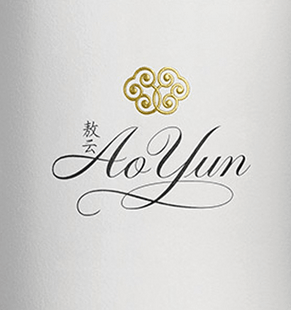
Ao Yun Estate
Moët Hennessy Shangri-La (Dequin) Winery
Adong village, Shenqping Town, deqin county Diging Tibetan Autonomous Prefecture
Yunnan
674499 China
Tel : +33 (0)557 247 139
https://www.mh-wine-estates.com/ao-yun
Created in 2012 after four years of research, and after exploring 4000 hectares to detect the best terroirs on the Tibetan border in the foothills of the Himalayas, Ao Yun was born of the boldness of the Moët Hennessy group, a subsidiary of the LVMH group. From the outset, the aim was ambitious: to produce a world-class Chinese wine, never before produced, on 30 hectares, i.e. 314 separate plots, in a breathtaking mountain setting at an altitude of 2,600 metres. In less than a decade, the gamble has paid off, with wines - recognized as some of the best in the world - that feel like they've sprouted wings, or should we say, wines that “fly above the clouds” according to Ao Yun's literal meaning and intrinsic definition.
More than just a wine that has become mythical in the space of just two vintages (2013 and 2014), Ao Yun is first and foremost the story of an estate created ex-nihilo with a great deal of ambition, technical resources, human resources and French know-how combined with local Chinese and Tibetan human resources. Why Ao Yun? The name means “flying above the clouds” in reference to the thick clouds that settle over the mountain ranges, and that's an understatement when you consider its geographical and environmental location: the remote region of Shangri-La, in the northeast of China's Yunnan province. Background: the project, initiated in 2008-2009 by the Moët Hennessy group (LVMH group), aims to create an exceptional wine never before produced in China, in a totally new and breathtaking environment. But to achieve this, a detailed search for ideal vine-growing soils was launched. To identify Le Terroir, an Australian winemaker, Tony Jordan, was commissioned by LVMH. But the beginnings of the quest for the Holy Grail are proving to be rather slow, if not difficult, as the first observation is that China's two main climates for viticulture are rather unsuitable. The south is too humid, while the north and center of China are too harsh in winter. As for the summers, they are too hot and can pose major problems for achieving the acidity in wines that guarantee freshness and longevity. Tony Jordan decided to look for “microclimates”. And it was here that he discovered an area which, at first sight, was totally unprecedented for vines, but which would eventually prove ideal for the project to make China's greatest wine: the northern part of the Yunnan wine-growing region, in other words, on the border with Tibet. After four years of exploration and a review of more than 4,000 hectares, the Moët Hennessy team selected a series of vineyards in Yunnan, located between 2,200 and 2,600 meters above sea level, in a region with very little viticulture. The terroir is characterized by a cool climate and a wide variety of soils, ideal for growing French grape varieties, starting with Cabernet Sauvignon. Indeed, in the 2000s, the Chinese authorities encouraged the planting of Cabernet Franc and Cabernet Sauvignon, some of which is included in the Ao Yun estate.
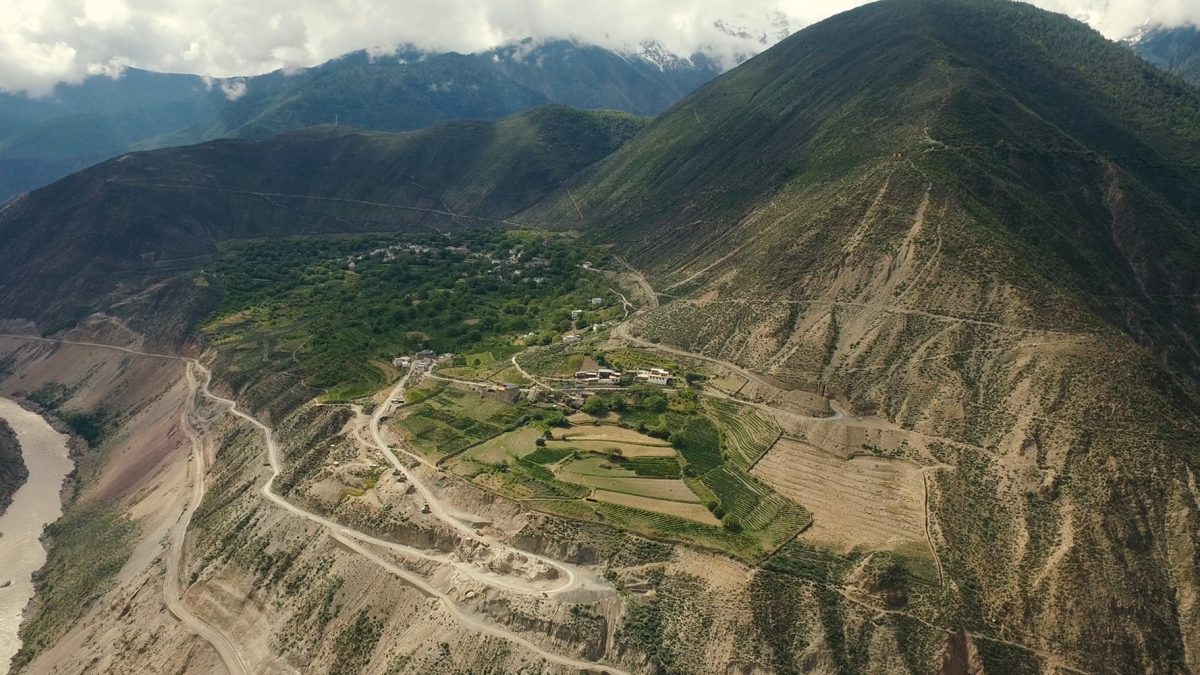
This adventure in extreme viticulture (“extreme” because it takes place in a wild and very demanding place, with very dry air and low oxygen levels, both for people and for the various stages of wine-making), under the responsibility of Maxence Dulou (49 years old and director of the Ao Yun estate, who settled there with his wife), aimed to celebrate the harmony between man and nature, according to the project's instigators. Working with local Tibetan communities, Ao Yun integrated traditional farming practices with more modern winemaking techniques, while respecting the unique mountain environment. In 2013, the first vintage of Ao Yun was born, an ambitious wine made from 90% Cabernet Sauvignon and 10% Cabernet Franc.
To understand Moët Hennessy's decision to invest in China and the Tibetan peaks for its daring viticultural adventure on the banks of the Mekong, it is perhaps useful to briefly recall the history of vine cultivation in China. Although China's vineyards currently rank second in the world, and until Ao Yun's arrival had presented us with wines of more or less reliable standard (often with the impression of average wines), it has to be said that Chinese viticulture, although fairly recent in comparison with the history of other wine-producing regions in the world, has very quickly come to terms with the vine. It's no coincidence that the LVMH group has chosen to establish the estate and its 30 hectares in this incredible location, in the midst of rather vertiginous ravines. In fact, 30 hectares had already been planted in 2002, in the foothills of the Himalayas, beneath the sacred mountain of Meili, at an altitude of 2600 meters, on the initiative of the Chinese authorities. But the first vines were planted here long before, by priests from the Missions étrangères de Paris in 1846, between the Mekong, Salween and Yangtze rivers. Unfortunately, these vines were left uncultivated following persecution from 1905 until the late 1990s. It was here that it was discovered that these vines - which covered the Yunnan region - came from a French grape variety (now extinct), but said to be renowned for its “vin de messe”: rose honey.
Today, the surface area of vineyards located on the banks of the three rivers covers no less than 500 hectares. But this overlooks the fact that China has 10 major wine-growing regions, many of which produce wine grapes exclusively for wine-making.
For LVMH, a commitment to a 30-year lease with the Chinese authorities and the 120 families who make up the four villages where the Ao Yun vineyard is located was necessary to establish its winery. But it's a win-win situation, and the results have quickly shown that the marriage between East and West, between two cultures, works wonders. The French group's presence in these wine-growing lands has enabled many investments to be made to benefit local life and bring a certain comfort that didn't exist before. Starting with encouraging the local authorities to tar the roads, provide 24-hour electricity and also build houses to better accommodate the workers and their families (Tibetans, Chinese minorities and Hans from the Chinese majority) hired at the winery.
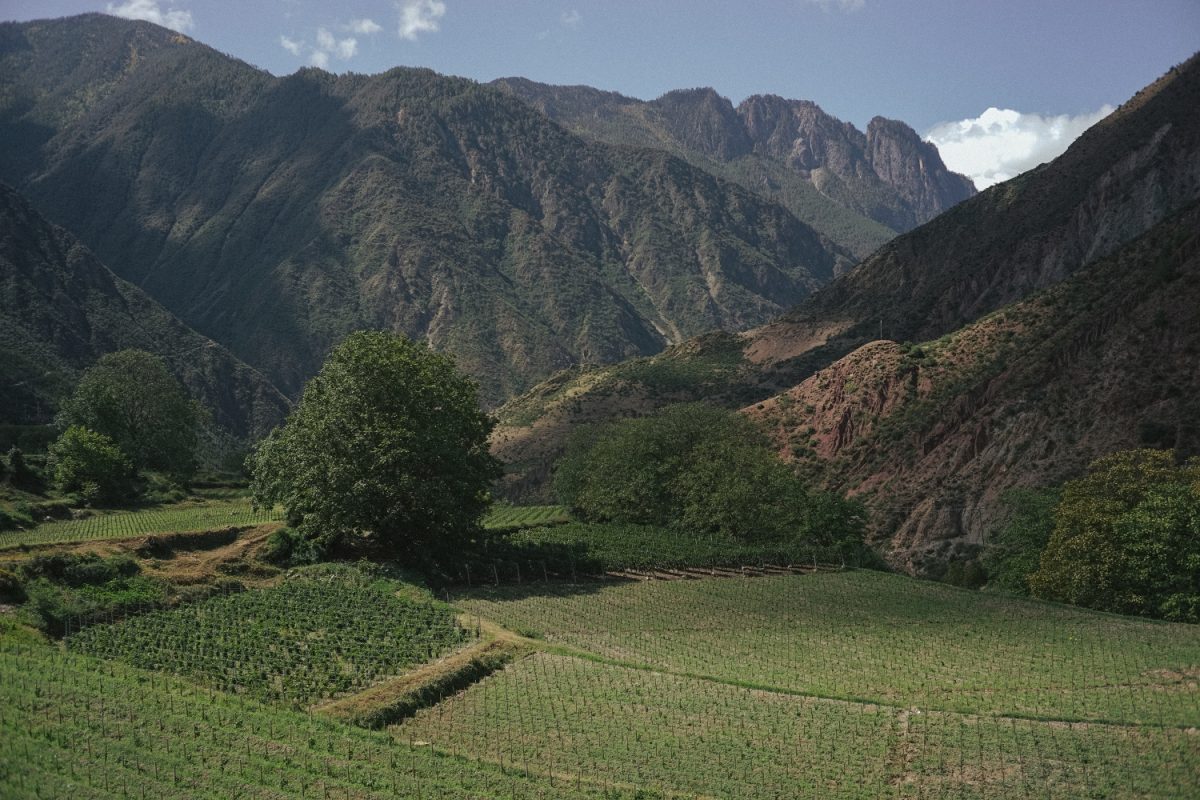
The 30-hectare vineyard created by Winery Shangri-La (Moët Hennessy Estates & Wines), after four years of research to find the most promising location, is located near the city of Shangri-La, in the heart of an enchanting valley, so to speak, on the UNESCO World Heritage site of Three Rivers and Parallels. Situated on the 27th parallel north, the climate is quite similar to that of Bordeaux, with no monsoon thanks to the mountains rising to 6800 meters, providing a natural barrier against the rains (whereas Bordeaux is quite humid in spite of everything), average temperatures with no detrimental variations and, above all, dry air. It was therefore the ideal location, at an altitude of between 2200 and 2600 meters, to plant 30 hectares divided into 314 plots. These plots are all cultivated by hand, and each in a different way. Such viticultural precision is unique in the worldThe vineyards are farmed organically by 300 local farmers in the terraced villages of Shinong, Adong, Xidang and Shuori. It should be pointed out that many local farmers, encouraged by the local authorities, had abandoned traditional crops (barley, wheat, corn, etc.) 10 years before the arrival of this LVMH project, to devote themselves 100% to the vine, as it proved to be more profitable (up to 4 times more than they could earn from barley, wheat or corn). However, the wines produced at the time were not suitable for penetrating international markets, as they were sold at low prices due to their average intrinsic quality and inefficient marketing expertise.
Needless to say, Moët Hennessy's ambitious project to make Ao Yun the greatest Chinese wine and one of the best in the world, sold like a Burgundy or Bordeaux grand cru, was bound to raise the profile of this ultra-premium product on the European and American markets. To understand the high price of this wine, we need only think of the fact that AO Yun, as Maxence Dulou points out, requires 3500 hours of work per hectare per year, four times more than the world's largest vineyards, hence the corresponding resale price: 300 euros per bottle.
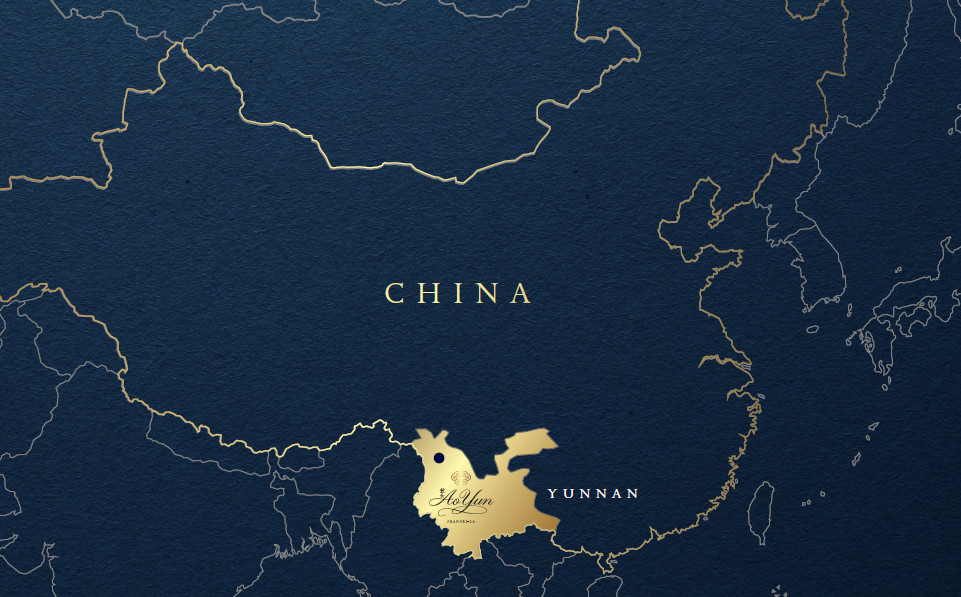
As mentioned above, the vineyards are located at altitudes of between 2,200 and 2,600 meters. In such conditions, the grape varieties planted (Cabernet Sauvignon, Cabernet Franc) do not suffer from any risk of over-ripeness, and therefore of possible heaviness in the wines obtained. The freshness of the harvested grapes and the balance of the resulting wines are guaranteed first and foremost by altitude. Obviously, this mountainous context means that winters and summers are a little cooler than in Bordeaux, but springs are drier and sunnier, as in late summer. This is a considerable advantage, as diseases such as mildew have no time to develop, as the dry air at this altitude quickly dries out the vines in the event of rain. But there are constraints. Rainfall is fairly scarce (no more than 200-300 mm per year), which means we have to resort to vine irrigation (authorized in China). Irrigation is carried out with spring water from glaciers. Finally, because of the altitude, oxygen levels are low, which means that oxygen has to be added, as the wines evolve differently and more slowly, but this also ensures that they age longer and therefore more harmoniously. But the dryness of the air can hamper the wine's ability to taste when it comes to blending. The nose and mouth are drier, and oenologists quickly become saturated, with a false sense of balance and tannin quality. This is why, to avoid any errors of judgement, blending tastings are carried out using Hong Kong samples. A novel approach, but a necessary one.
As far as the vines are concerned, Maxence Dulou explains: “Green harvesting” is practised to limit the load of grapes on the vines. But unlike other wineries around the world, here at Ao Yun, it's not per hectare but per vine, or even per branch: 1kg per vine, 100g per branch”. As the area is very remote (6 hours' drive to the first town), the villages have to function autonomously, hence the maintenance of a polyculture system, which Ao Yun has endeavored to fit into. “It's a virtuous circle: plants feed animals, animals feed plants. We ourselves use the villagers' compost, and they collect the branches from trimmed vines to feed to their animals.” In other words, what's taken from nature is given back.
Harvesting is carried out exclusively by hand, as no mechanical equipment can really be used due to the configuration of the terrain and location. Harvesting takes place from September to the end of November, a longer period than elsewhere, due to the varying altitudes of the four villages that make up the estate. Here, there's no risk of over-exposure to the sun: the shadows cast by the mountains reduce the amount of sunshine by almost 60%, allowing the grapes to ripen slowly. This low level of sunshine is largely offset by the altitude, which offers powerful UV rays at these heights, since the sun is closer to the grapes in these extreme high-altitude conditions. How do grapes react? Well, it produces thicker skins to protect itself from the sun, and will also develop more color. In addition, UV rays penetrate the grapes more deeply, allowing the tannins in the seeds to ripen better. The result: a more complete texture of the tannins and all the elements of the grape.
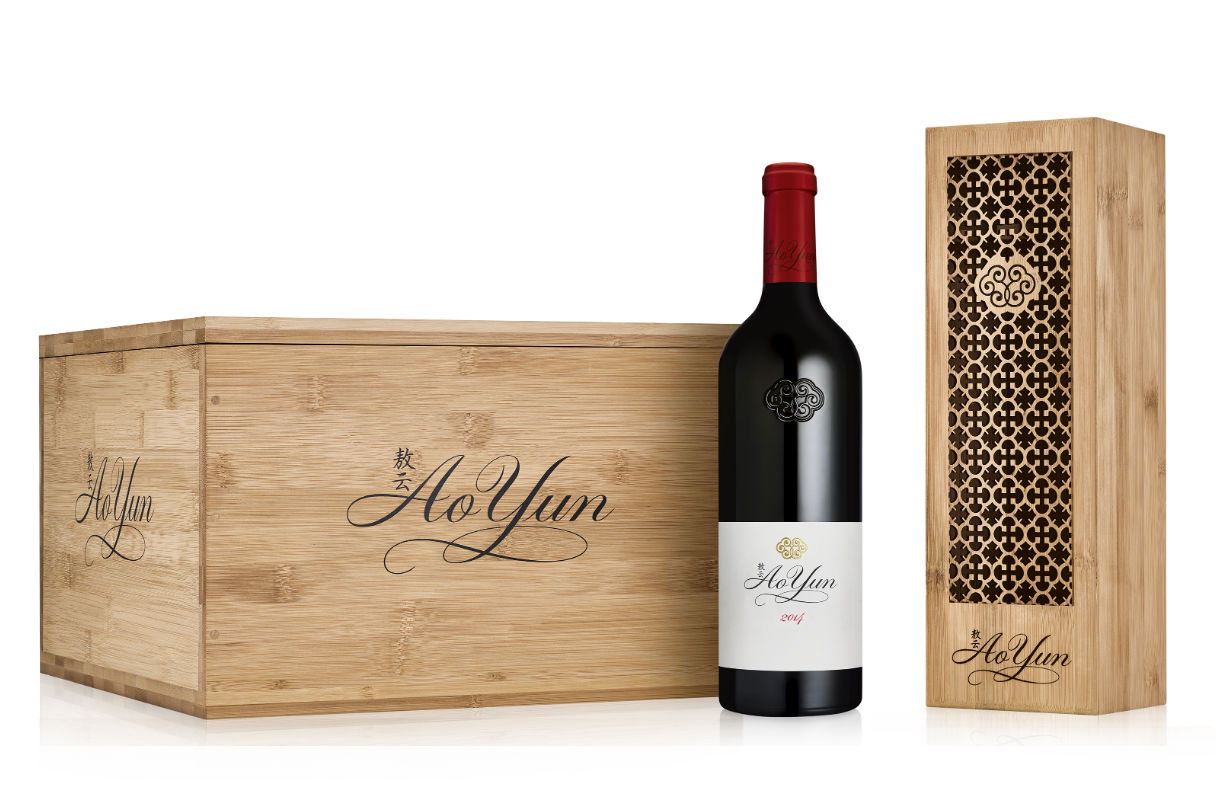
Does China finally have an iconic wine with an international reputation? At 300 euros a bottle, there's no room for error! Launched as early as the 2013 vintage, Ao Yun has been receiving rave reviews and accolades ever since. The renowned Wine Spectator awarded it exceptional scores, particularly for the 2013 and 2016 vintages, each of which received over 95 points out of 100. Quite a feat for such a young wine. In 2020, Ao Yun was also included in the list of the world's best wines by several renowned international publications, reinforcing its reputation as a must-have wine for the most demanding wine lovers. The wines are bluffing, that's for sure. Since its first vintages and cuvées, progress has been made over the years, with an increasingly precise understanding of how the different terroirs and the 314 plots that make up Ao Yun react. There have also been a number of changes in the grape varieties and therefore in the blends, notably since the 2017 vintage, with a portion of Merlot planted in 2013, complementing the Cabernet Sauvignon (the majority, since it makes up 70% or even 90% of the final blend), which is responsible for the density and beautiful structure of the wines, and the Cabernet Franc, which adds finesse and freshness. 2018 also sees the arrival of Petit Verdot and Syrah in the blends, adding even more aromatic complexity, tannic elegance, minerality and depth to the Ao Yun wines, combined with the age of the vines accumulated over the years. The wines are remarkably fresh, with acidities far superior to those of the great wines of Bordeaux, which are nonetheless benchmarks the world over. Is there a recognizable Ao Yun signature? Yes. In these wines, where not a single detail has been left to chance, what is striking is the smell of cedar, but this “balsamic” scent cannot be explained by the influence of ageing, since the barrels used for ageing are essentially barrels that have already been aged. 62% of the barrels are therefore old, the rest being new. It's this choice of barrels - which we don't want to leave their mark on the wines, at the risk of erasing the imprint of the terroir - that allows the terroir to express these mineral and balsamic aromas. Great art!
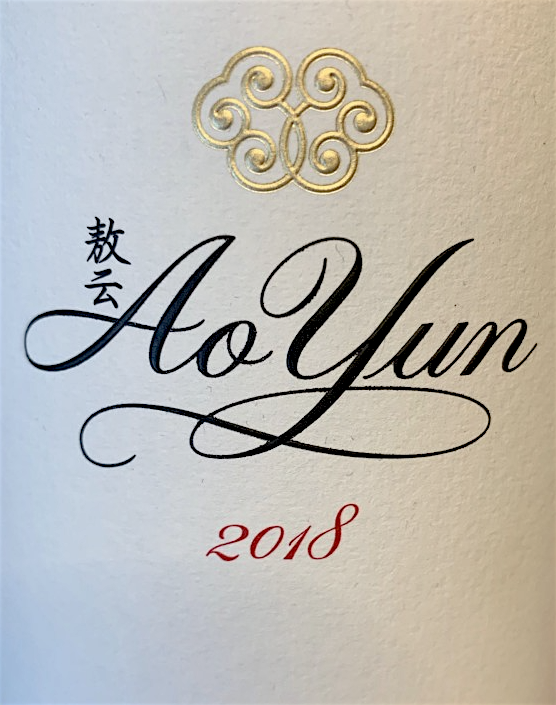
To make this wine, 60% of the grapes harvested in this vintage go into this blend. A blend of 67% Cabernet Sauvignon, 17% Cabernet Franc, 10% Syrah and 6% Petit Verdot, Ao Yun 2018 boasts an intense purplish-red color. The nose is deep and expressive, with intense black fruit aromas dominated by cherry and blackberry. The attack on the palate is frank (a great characteristic of Ao Yun wines), with elegant, very silky, chiselled tannins conferring uprightness and precision to the whole, all bathed in fruit that extends to the finish. A refined wine with good ageing potential!

Composed of 60% Cabernet Sauvignon, 19% Cabernet Franc, 10% Syrah, 6% Merlot and 6% Petit Verdot, Ao Yun 2020 is the estate's 8th vintage to be named “China's best wine” by journalist Edward Ragg for the Wine Advocate (formerly Parker). The color is dense and dark. The nose is complex and deep, with notes of spices, red fruit and a touch of tobacco. The palate is dense, precise, fruity, and slender, with supple, silky tannins. The finish is as refreshing as you could wish for, and the whole wine is well-balanced!
2014-2015-2016-2017-2018-2019-2020-2022

Website under construction
Available Soon